How long will flour last in sealed containers depends on various factors, including the type of flour (be it wheat, white or gluten free), storage methods, and environmental conditions.
Flour is a vital ingredient in baking, and has several varieties, each with its distinct shelf life. In a sealed container, flour can last for a considerable amount of time. But that depends on the type of flour and storage conditions.
In this article, we’ll explore flour’s shelf life, its types, and the best practices for its storage. So read on to learn how to store flour long term and get the most out of your supply!

In This Guide

Flour Types And Shelf Life
Different flour types, like whole wheat, all-purpose, and bread flour, each come with unique shelf lives. For instance, whole wheat flour, rich in bran and germ, tends to have a shorter shelf life than its refined counterparts due to its natural oils.
Whether you have wheat, white, gluten free or other types of flour the shelf lives will vary depending on how they are stored and the containers being used.
Each has its specific shelf life when stored in a sealed container and in different conditions. This distinction is crucial to ensure the quality of your creations.
| Flour Type | Shelf Life | Shelf Life in Fridge | Shelf Life in Freezer | |
| All-purpose flour/Bread flour | 6 to 12 months | Up to 2 years | Up to 2 years | |
| Whole wheat flour/Rice flour | 3 to 6 months | 8 months | Up to 1 year | |
| Cake flour | Up to 1 year | 2 years | 3 years | |
| Self-rising flour | 4 to 6 months | Up to 1 year | Up to 1 year | |
| Gluten Free Flour | 3 to 6 months | Up to 1 year | Up to 1 year |
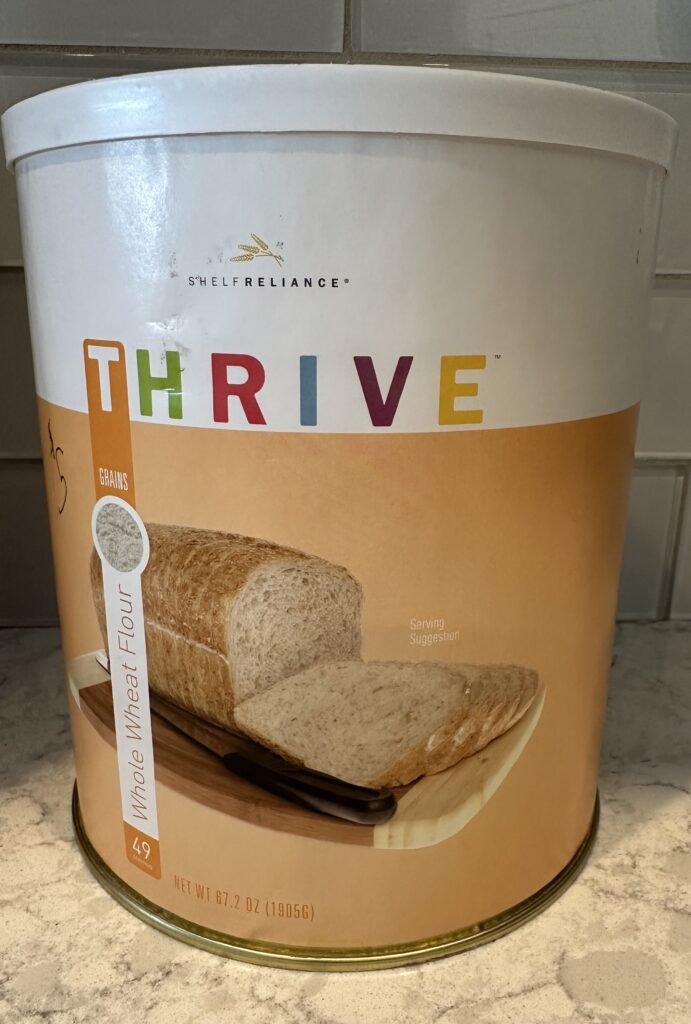
Effective Flour Storage Techniques
Airtight containers stand out as one of the most effective means for extending the longevity of flour. Properly utilized, they can protect flour from moisture and contaminants, key culprits in reducing its freshness. By combining this with a few other strategies, you can extend the life of your flour considerably.
Here are some effective storage techniques:
Use Airtight Containers
If you want to prolong the shelf life of your flour, using airtight containers is a must. The seal inhibits moisture, one of flour’s primary enemies, from entering.
Not only do they protect against moisture and air, but they also safeguard the flour from external contaminants and pests. Glass or high-quality plastic containers with tight-sealing lids are preferred choices.
You can also vacuum seal to preserve flour, as it removes air from the storage bag, minimizing the risk of spoilage and extending the flour’s shelf life.
Transferring flour to these containers allows for easier access and helps keep your pantry organized. Also, label containers with the flour type and date of purchase for easy reference.
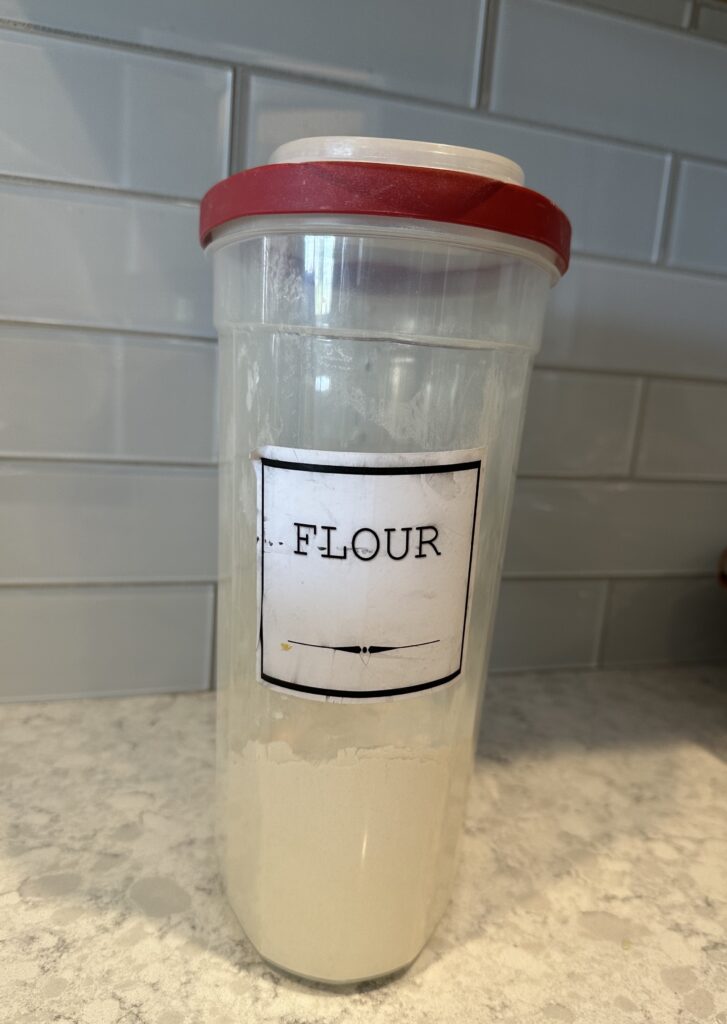
Store In A Cool And Dry Place
Storing flour in a cool, dry, and dark environment helps extend its shelf life because temperature plays a significant role in determining the flour’s shelf life. To maintain freshness, keep an ideal storage temperature of around 60-70°F (15-21°C).
Warm and damp environments accelerate flour degradation, so keeping it away from sources of heat and moisture is crucial. Pantries and cupboards are typically ideal locations.
If you live in a particularly hot or humid environment, consider storing flour in the refrigerator or freezer in a sealed container to prolong its shelf life.
Keep Away From Strong-Smelling Items
Flour is porous and can absorb odors, so keep it away from strong-smelling items like spices and other aromatic ingredients that can alter its flavor.
It’s best to store flour in a separate, designated area or using airtight containers with odor-blocking capabilities can help prevent cross-contamination of smells. This will ensure your baked goods maintain their intended flavor profile.
Regularly Check For Freshness
Regular checks for freshness involve searching for bugs or mold on your flour. This indicates that it has reached the end of its life. Also, as flour ages, its quality decreases, and it can develop off-odors or become infested with pests like pantry moths or weevils.
Even with the best storage practices, external factors can affect the flour’s state. By periodically assessing its color, smell, and texture, you can identify any degradation signs early on.
If you find any indications of spoilage, discard the flour immediately to prevent further contamination.
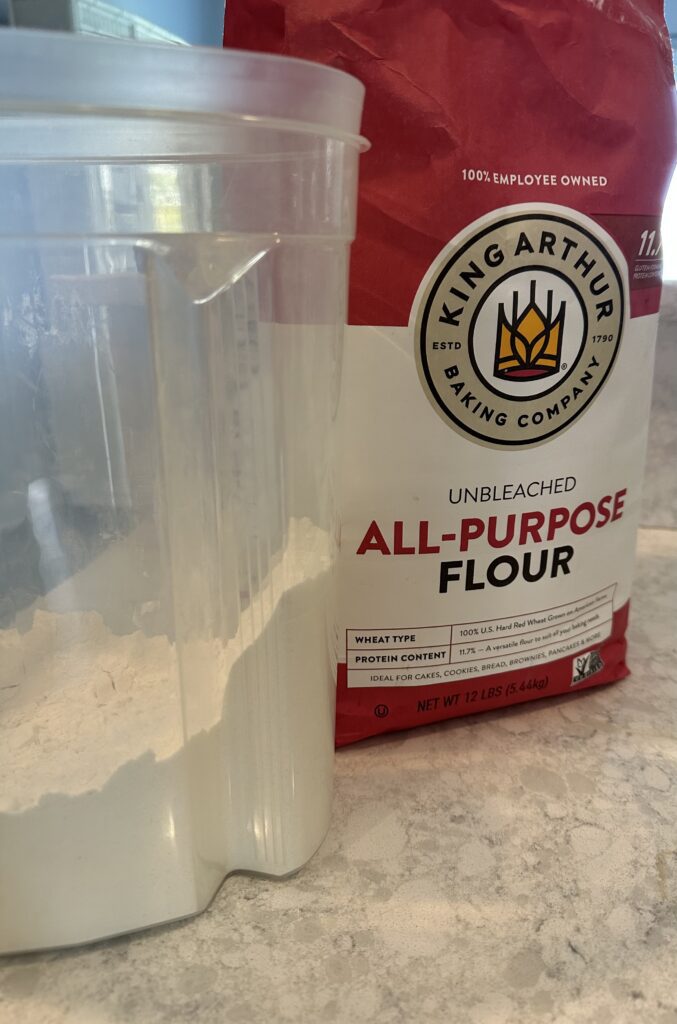
How To Store Flour To Prevent Bugs
To keep flour free from bugs, especially the dreaded pantry moths and weevils, ensure it’s stored in sealed environments. Mylar bags, a type of resealable bag, offer a protective layer against these common pests. While the quality of flour can degrade over time due to exposure to air and moisture, a well-sealed container can keep it bug-free and usable for up to a year.
Always ensure cleanliness and use specific storage techniques to keep these pests at bay. Remember, prevention is always better than cure, especially with food items. Here are some ways to avoid bug infestations:
- Freeze flour for 48 hours before storing. This kills any eggs or larvae that may be present.
- Use airtight containers. Sealed containers prevent insects from entering and infesting your flour.
- Store in a clean, cool, and dry area. Proper storage conditions prevent flour from attracting pests.
How To Freeze Flour For Extended Storage
You can extend the shelf life of your flour by freezing it because at lower temperatures, the natural oils are less likely to spoil. It’s crucial, however, to pack flour in containers like Mylar bags that prevent moisture intrusion during this process. This method not only keeps it fresh but also eliminates the possibility of bug infestations.
Generally, frozen flour will last for 2 years, but it depends on the type of flour and if kept in ideal conditions. To freeze flour, place the flour in an airtight, freezer-safe container or a sealed plastic bag before storing it in the freezer. This method prevents the flour from absorbing moisture and odors.
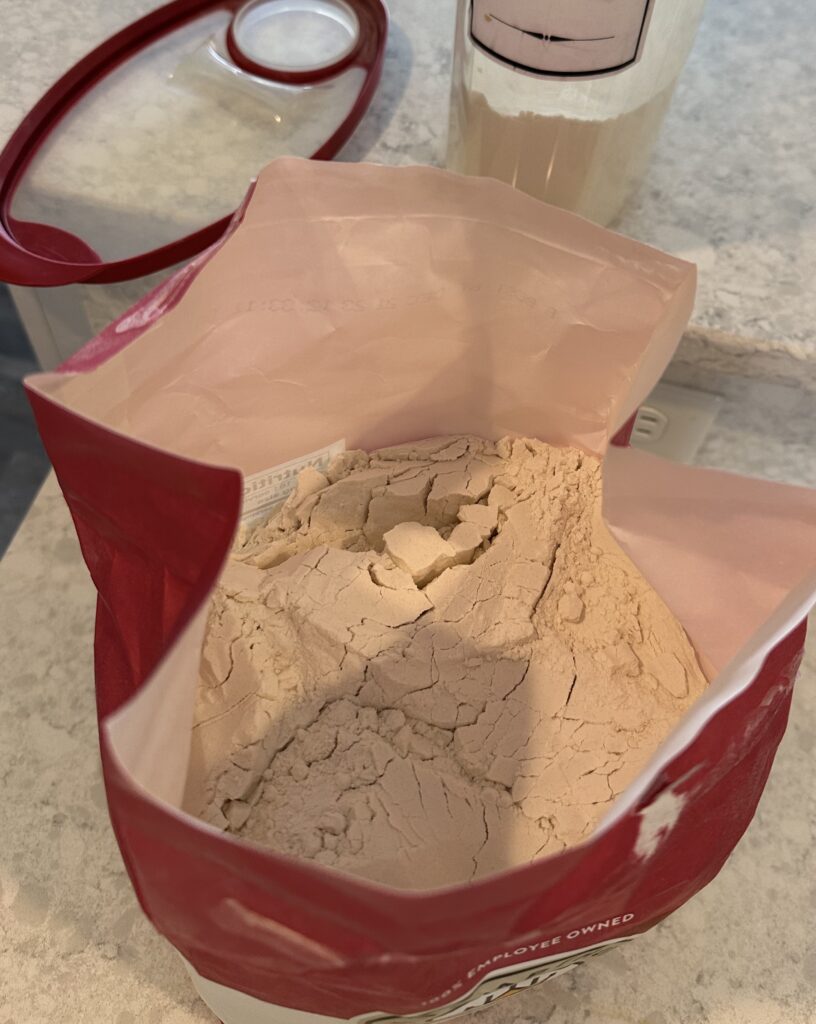
Signs Of Expired Flour
Utilizing expired flour in your recipes can lead to subpar dishes and potential health concerns. Flour, especially when it becomes a breeding ground for mold or pests, can introduce unwanted contaminants to your meals.
Knowing the signs of expired flour is vital to ensure your baked goods turn out perfectly every time. From a change in aroma to the appearance of mold, there are several indicators to watch out for:
Unusual Odor
Fresh flour should have a neutral scent, and any deviations from this can indicate spoilage. This smell often arises from the breakdown of natural oils.
If your flour has a sharp, sour, or musty odor, that’s a clear sign it’s past its prime. Trust your nose – if it doesn’t smell right, it’s best to err on the side of caution.
Remember, your baked goods will carry the taste and smell of the flour you use, which means an off-putting smell equals a no-go!
Changes in Color or Texture
Any changes in color or texture are signs that often indicate that the flour has been compromised by moisture. An off-white hue or a clumpy consistency can be warning signs that your flour is past its prime.
While some flours naturally have a darker or coarser texture, if you notice a marked change from the norm, it’s probably time to toss it. For instance, whole grain flours may become oily or clumpy, while white flour might appear yellowish.
Mold Growth
Mold spores can thrive in flour that has been exposed to moisture or not stored properly so, any visible mold growth is a definite sign of spoilage. It indicates an unsafe level of moisture and potential fungal contamination.
Consuming moldy flour can pose health risks, so it’s essential to discard it immediately.
Unusual Taste
Your taste buds can identify when the flour has lost its original characteristics so, any unusual taste should be a warning sign. It’s always a good idea to taste a small amount before using it in large quantities for baking.
And even if flour appears fine, an unusual taste can be a giveaway of its compromised quality. If your baked goods start to taste odd or bitter, the flour you use might be the culprit.
Presence of Bugs
The presence of bugs signifies contamination and these pests are often attracted to improperly stored flour.
Discovering bugs in your flour is a clear sign of contamination. Not only does it indicate improper storage, but it also means that the flour should no longer be used for consumption.
Pantry pests, such as flour beetles or weevils, are a common problem in improperly stored flour. If you see bugs in your flour, it’s best to throw it away immediately to avoid a larger infestation.

Why Does Flour Go Bad?
The longevity of flour in a sealed container depends on several factors, including the type of flour, storage conditions, and exposure to moisture and air.
As we dive into these aspects, you’ll gain a deeper understanding of how to maximize the shelf life of this pantry staple.
Natural Oils
The natural oils present in flour speed up the spoilage process. These oils are particularly prevalent in whole-grain and nut varieties.
These can oxidize over time and become rancid. This process manifests as an unpleasant smell and taste, indicating that the flour has gone bad.
Whole wheat and almond flours are particularly susceptible due to their higher oil content. Regularly checking your flour for these signs can help you avoid any unpleasant surprises during your baking activities.
Pests
Pests, such as weevils and mites, contribute to spoilage. They can infiltrate even the most secure packaging if not stored correctly.
Unfortunately, even well-stored flour can become a target for pests like weevils and beetles. They might look small, but these tiny critters can wreak havoc on your flour, leaving you with a contaminated mess.
These tiny insects are attracted to flour and can quickly contaminate a supply if not caught in time. So regular inspection of your flour supply can help prevent a full-blown infestation.
Moisture
Moisture is another key player in flour spoilage. High humidity levels can dramatically shorten its shelf life. When flour comes into contact with water, it creates the perfect environment for mold growth.
And often, this mold is not apparent until after the flour has been used. Always store your flour in a dry place and ensure it’s sealed properly to minimize moisture exposure.
Temperature
Inconsistent temperatures can also accelerate flour spoilage. Flour maintains its freshness best when stored in a stable, cool environment.
When subjected to inconsistent temperatures, it can go bad rapidly, leaving you with a useless batch. That’s why finding a suitable and stable storage area for your flour is crucial.
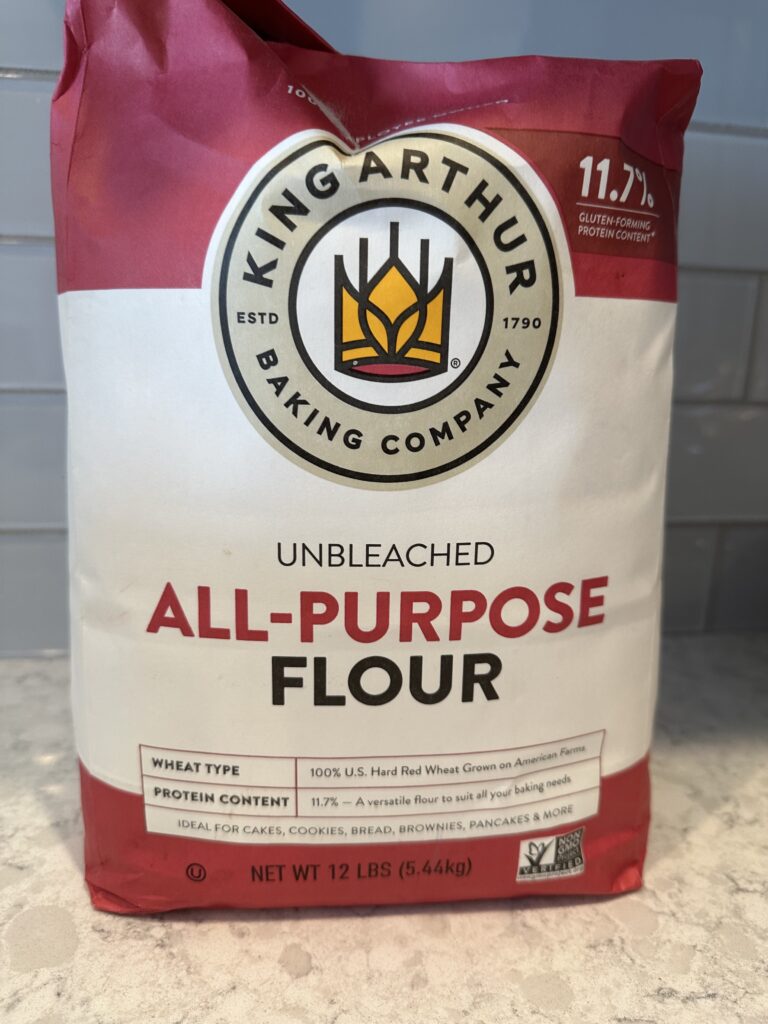
What Happens If You Use Expired Flour?
Using expired flour may not yield the same results as fresh flour in your recipes, and it can pose some food safety concerns.
Over time, flour can harbor bacteria or develop mold if it has been exposed to moisture. Additionally, its quality deteriorates, which can affect the texture and flavor of your baked goods.
FAQs About How Long Will Flour Last In Sealed Containers
Can you use flour two years out of date?
While using flour two years out of date may not be harmful, its quality, taste, and texture could be compromised. So don’t use flour that’s out of date, and use fresh ones for the best results.
How do you store flour for years?
To store flour for years, keep it in an airtight, freezer-safe container or a sealed plastic bag and place it in the freezer.
Does flour expire if unopened?
Flour does have a shelf life, even if unopened. However, the expiration date will depend on the type of flour and storage conditions. You should also check the label to see how long you can store your flour.
How do you stockpile flour?
To stockpile flour, store it in airtight containers, keep it in a cool, dry, and dark place, and rotate your stock by using the oldest flour first. You can also freeze flour for long-term storage.
Is it safe to store flour in a plastic container?
Yes, it is safe to store flour in a plastic container as long as it is airtight and food-grade. Make sure the container is clean and dry before storing the flour.
What should I do if my flour gets damp?
If your flour becomes damp, you can dry it out very easily by spreading it out on a baking sheet and heating it for 15 -20 minutes at 200F. You need to keep an eye on it so you don’t accidentally cook the damp flour.
You just want to evaporate the water. This can also be done by leaving it spread out in a dry, warm space that has good ventilation.
Does Gluten Free Flour Last Longer Than Regular Flour?
No, gluten free flour does not typically last longer than regular flour because most gluten free flours are made from nuts that contain oils that can oxidize and go rancid more quickly.
Examples of Gluten Free Flours: almond, buckwheat, cassava, tapioca, coconut, corn, arrowroot, and rice flours.
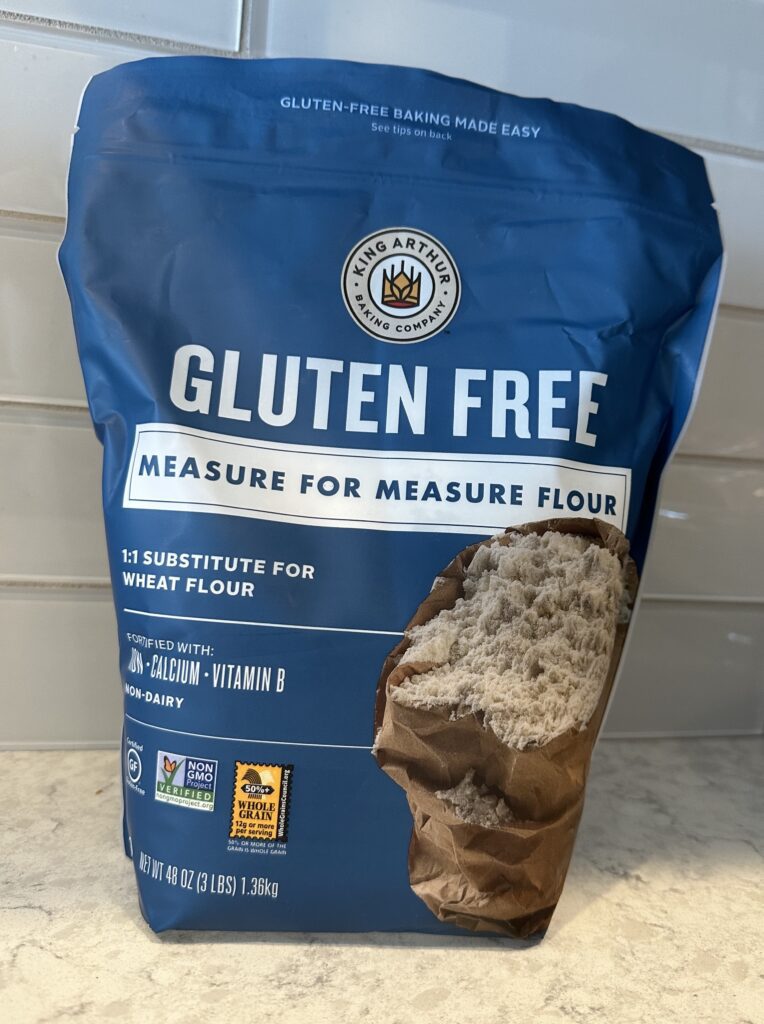
Key Takeaways: How Long Will Flour Last in Sealed Containers?
Flour’s lifespan depends on various factors, from its type to storage methods. Sealing flour can significantly extend its longevity, keeping it fresh and bug-free.
But for long-term storage, consider transferring flour to an airtight container and freezing it.
For optimal shelf life, use airtight containers and store in a cool, dry location. Watch for signs of expiration such as unusual odors, mold growth, and bugs.
Ultimately, the state of your flour directly impacts the quality of your baking. By being attentive to these elements, you ensure the best results in your culinary ventures.
Follow our storage guidelines to make the most of this essential pantry staple.

Pro Tip
Properly storing flour for extended periods of time can guarantee a readily available supply of essential ingredients in case of a significant crisis. Flour serves a versatile purpose beyond just delectable desserts, it is a valuable resource for baking bread, enhancing soups, and even creating play-doh.
My son and I share a passion for cooking; it’s not only become his hobby but also a cherished bonding activity for us. Ensuring our flour is stored correctly is crucial, providing both nourishment and a sense of comfort during tough times. It’s essential to prevent the flour from spoiling or attracting pests with appropriate storage.
ABOUT THE AUTHOR
Angie Montgomery is the co-founder of Monday Day Prepping. She and her husband Bill have been "prepper's" since 2008. When she's not helping manage the homestead, she enjoys teaching her two boys how to cook and make natural alternatives to cleaners and other household items.

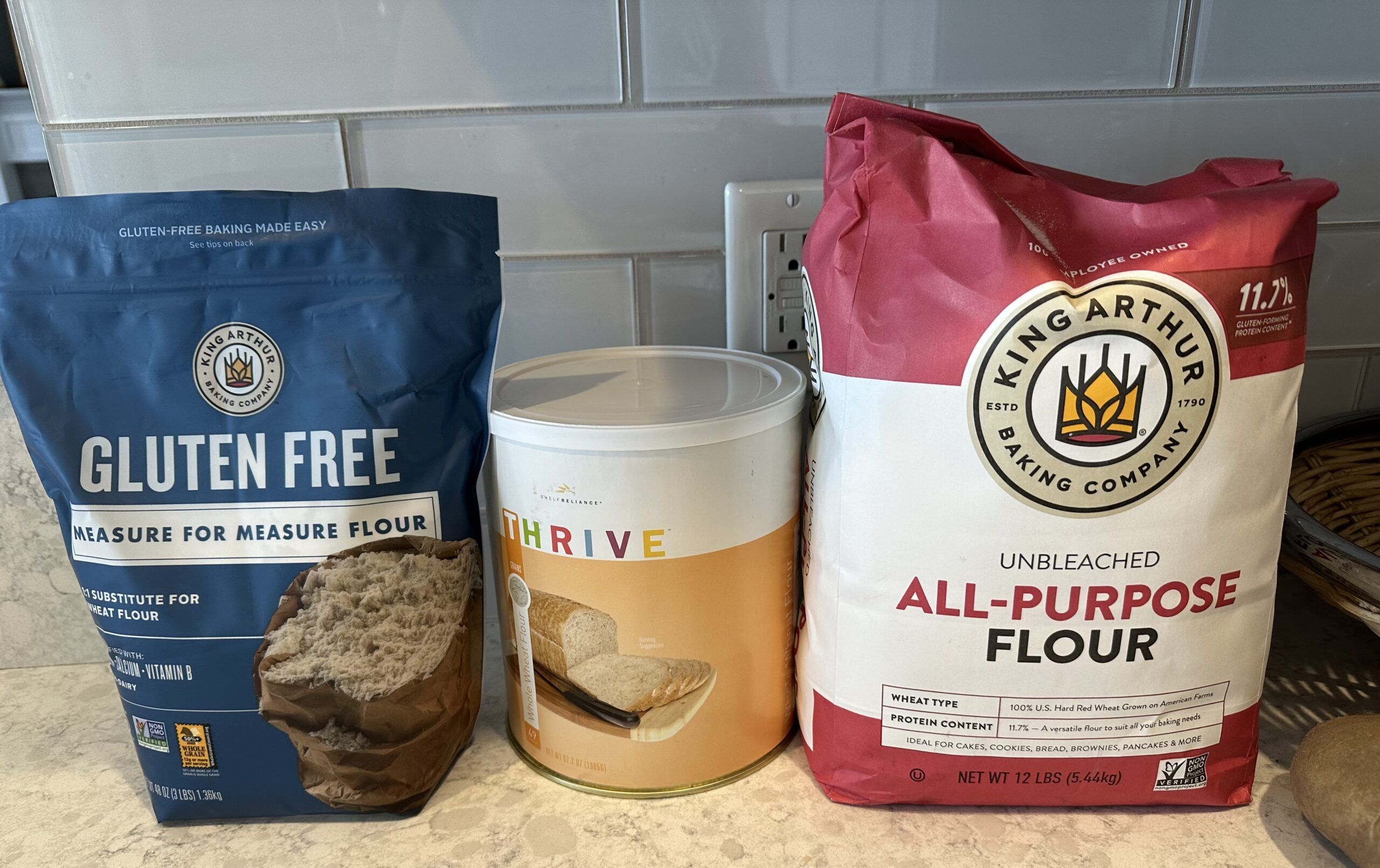
0 Comments